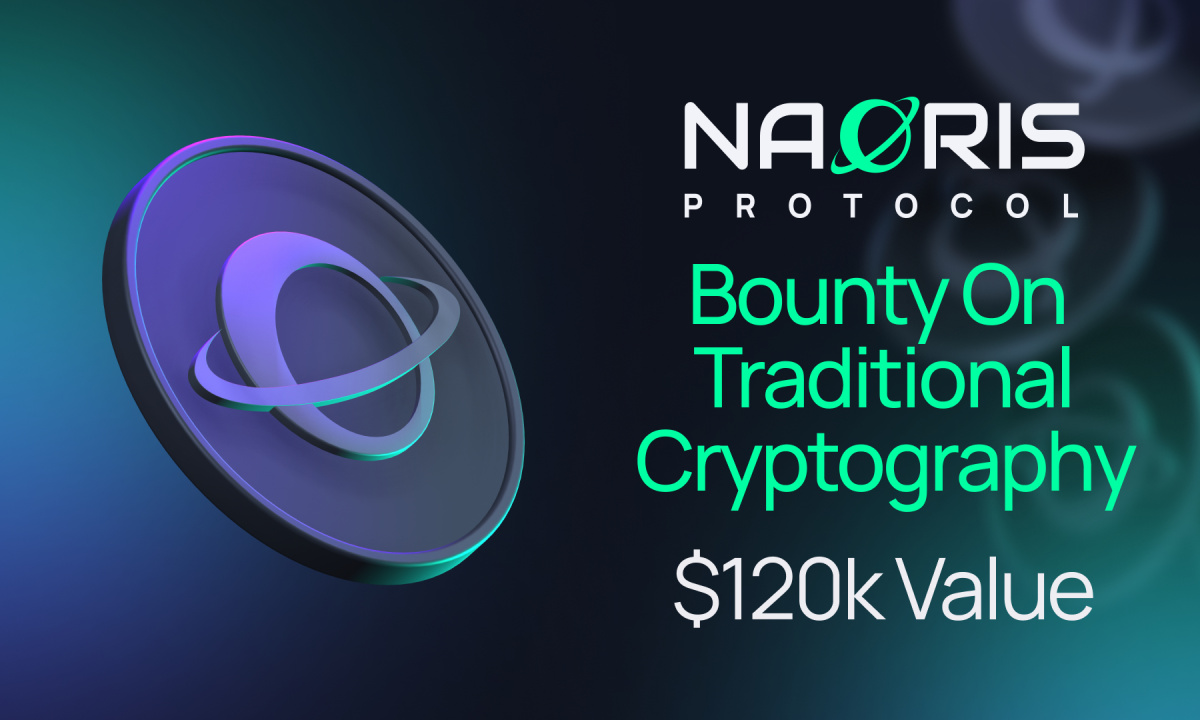Naoris Protocol Drops $120K Post-Quantum Bug Bounty—Crypto Security Arms Race Heats Up
Quantum-proof or bust: Naoris Protocol just upped the ante with a six-figure bounty hunt for cryptographic vulnerabilities. Because nothing says 'trust us' like paying hackers to break your system first.
Security showdown: As regulators scramble to keep pace with blockchain's breakneck evolution, this move signals a brutal truth—today's encryption could be tomorrow's Swiss cheese. The $120K prize pool? Chump change compared to the existential threat of quantum decryption.
Wall Street's watching... from their COBOL mainframes. While TradFi struggles with fax-machine-era infrastructure, crypto's stress-testing its armor against theoretical future threats. Now that's what we call playing chess while bankers play checkers.

Naoris Protocol, the post-quantum infrastructure pioneer, today announced a $120,000 (1BTC at time of announcement) bounty program challenging cryptographers worldwide to break the elliptic curve algorithms that currently secure the global digital economy, from Bitcoin’s $2.4 trillion market to the $410 trillion banking system.
The challenge draws attention to concerns about the long-term resilience of current cryptographic standards, which experts believe could be compromised by advances in quantum computing over the next two decades.
— factual, but suggest slight adjustment to punctuation:
- $50,000 for breaking secp256k1 (Bitcoin and Ethereum)
- $30,000 for breaking Ed25519 (Signal, WhatsApp, Solana)
- $20,000 for breaking NIST P-256 (TLS/SSL, Internet security)
- $10,000 for other major curves (P-224, P-384, P-521)
“This isn’t about attacking cryptocurrency, it’s about defending it,” said David Carvalho, CEO of Naoris Protocol. “These curves are mathematical masterpieces that have protected global commerce for decades. But quantum computing will RENDER them obsolete. We’re building the quantum-safe infrastructure the world needs before that day arrives.”
Elliptic curve cryptography is a foundational element in securing a wide range of digital systems, including financial services, blockchain networks, intellectual property protection, and secure communications. It is widely used in:
- Global banking and asset management systems
- Cryptocurrency networks such as Bitcoin and Ethereum
- Encrypted messaging platforms and secure web protocols (TLS/SSL)
- Government and defense communications
- As these cryptographic standards face potential future threats from quantum computing, testing their resilience has become a growing focus for both public and private sector stakeholders.
Participants must demonstrate the ability to recover a full private key from a public key using mathematical cryptanalysis. Implementation flaws, side-channel attacks, or weak random number generators don’t qualify; this is about breaking the math itself.
“When quantum computers achieve this in the next decade or two, it won’t be a drill,” Carvalho warned. “That’s why forward-thinking enterprises and governments are transitioning to post-quantum cryptography now.”
Current quantum computers have approximately 1,000 physical qubits. Breaking 256-bit elliptic curve cryptography requires an estimated 2,330 logical qubits. Although that gap may seem large, quantum computing is advancing at an exponential rate.
“The NSA announced in 2015 they’re transitioning to quantum-resistant cryptography,” noted Carvalho. “When the world’s premier cryptographic authority moves, smart organizations follow.”
Naoris Protocol is building enterprise-grade, quantum-resistant blockchain infrastructure using lattice-based cryptography that withstands both classical and quantum attacks. The company serves Fortune 500 enterprises and government agencies, preparing for the post-quantum era.
Contact
